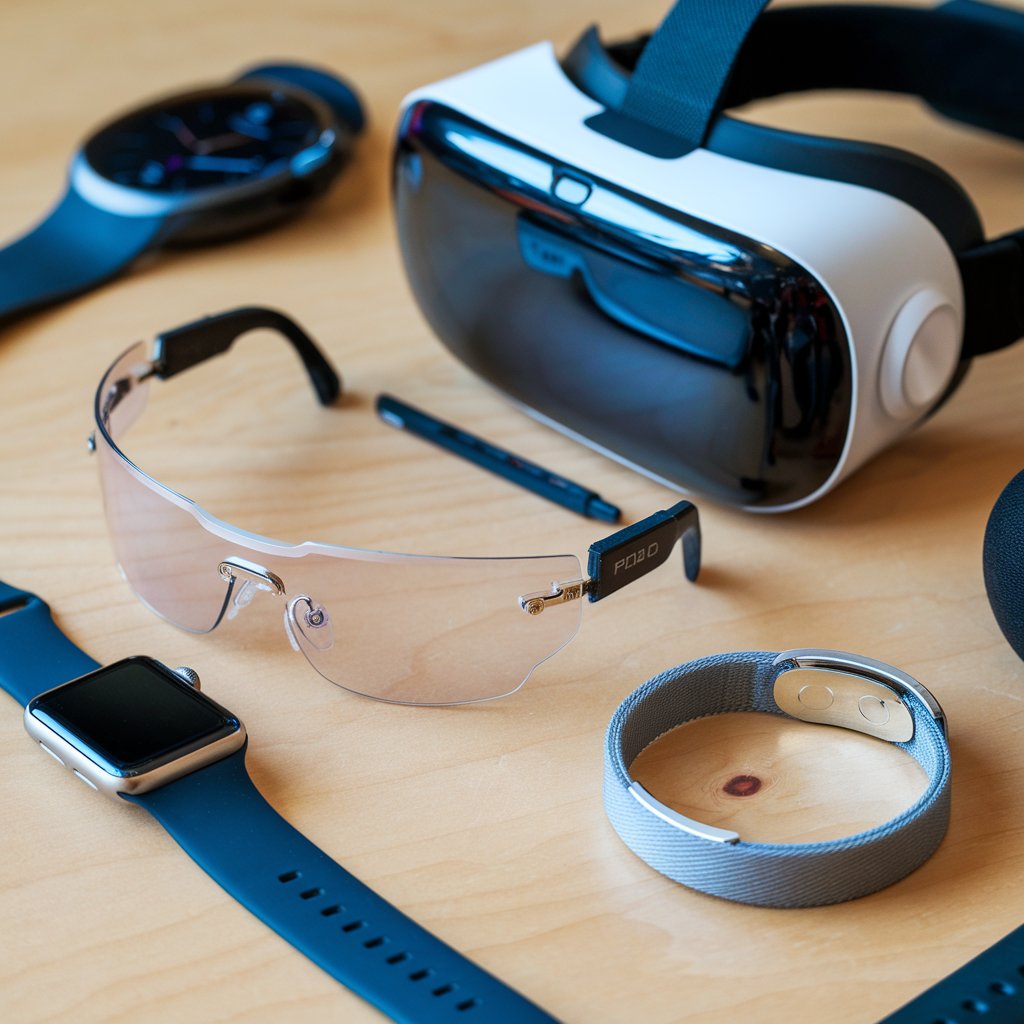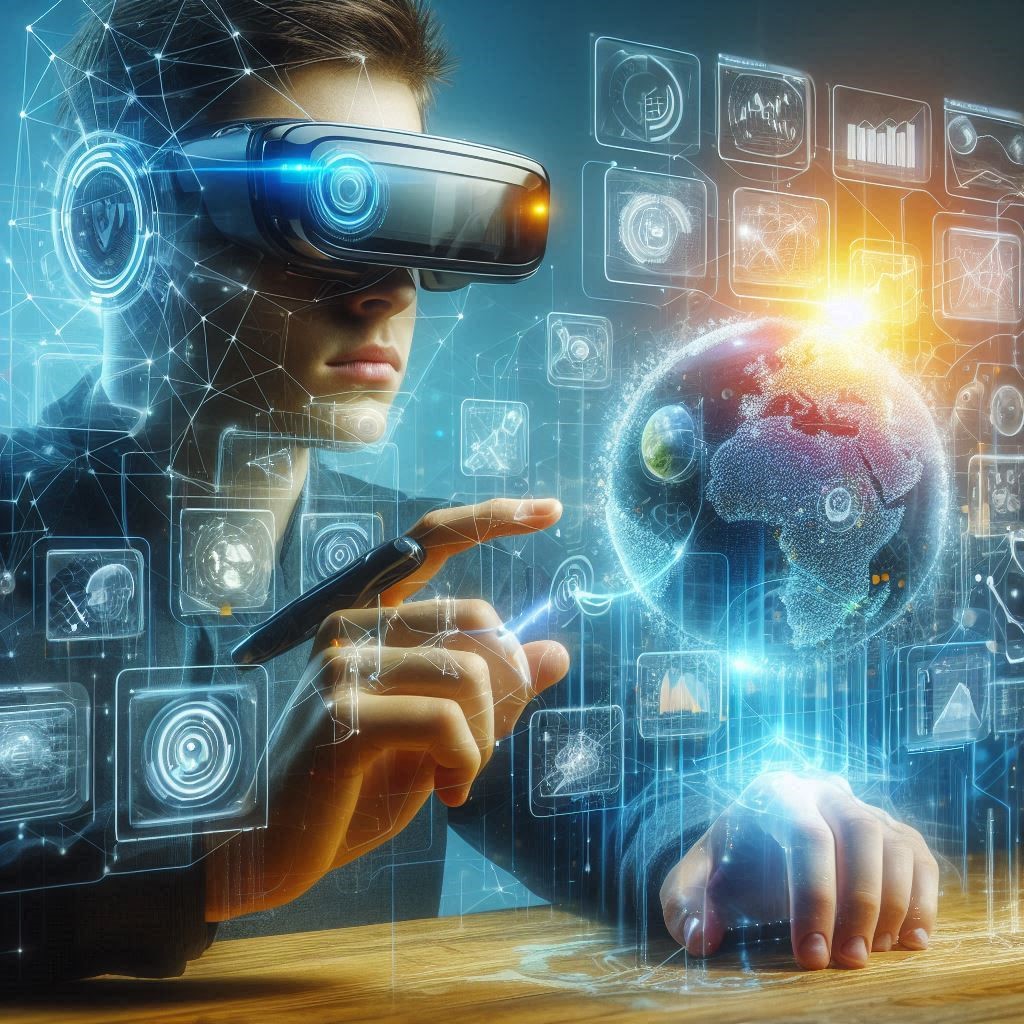Smart glasses have emerged as a transformative wearable technology, blending digital information with the physical world. Combining heads-up displays, cameras, sensors, and wireless connectivity, smart glasses provide a seamless and hands-free interface for accessing and interacting with data in real time. From healthcare to industrial operations and education, the applications of smart glasses are rapidly expanding across sectors.
The global smart glasses industry is projected to reach USD 4,129.3 million by 2030 from USD 878.8 million in 2024; it is expected to grow at a CAGR of 29.4%.

Smart Glasses in Healthcare
In healthcare, smart glasses are enhancing diagnostics, surgical procedures, and patient care. Surgeons can use augmented reality (AR) overlays to visualize organs, blood vessels, or medical imaging data during procedures, reducing the need to look away from the surgical field. Real-time video streaming allows remote experts to guide surgeries or consultations, bridging gaps in specialist availability. Nurses and paramedics can also use smart glasses to access patient records or communicate hands-free during emergencies, improving efficiency and response times. Additionally, wearable glasses are being used in telemedicine, enabling doctors to examine patients from a distance while maintaining situational awareness.
Smart Glasses for Industrial Use
Smart glasses are becoming indispensable tools in industrial environments, including manufacturing, logistics, and field services. Workers equipped with smart glasses can receive step-by-step instructions, live data feeds, and alerts without pausing to check handheld devices. This hands-free access to information reduces downtime, increases safety, and boosts productivity. In complex assembly lines, glasses can guide technicians through procedures with visual cues and error-checking in real time. For remote maintenance and inspections, smart glasses enable experts to view field conditions through a worker’s perspective and offer real-time assistance, reducing the need for travel and minimizing operational disruptions.
Download PDF Brochure @ https://www.marketsandmarkets.com/pdfdownloadNew.asp?id=148134046
Consumer Applications of Smart Glasses
On the consumer front,smart glasses are reshaping the way users interact with the digital world. With built-in AR capabilities, smart glasses allow users to navigate cities, receive notifications, and interact with digital content in real-world contexts. Navigation becomes more intuitive with turn-by-turn directions overlaid directly onto the street view. Fitness-focused glasses can track workouts, heart rate, and distance in real time. Some models integrate social media, voice assistants, and music, allowing users to stay connected while on the move. As design aesthetics improve, smart glasses are becoming more mainstream and fashion-forward, with growing appeal to tech-savvy consumers.
Augmented Reality through Smart Glasses
Smart glasses are one of the primary enablers of augmented reality (AR), allowing users to view and interact with digital elements layered over the real world. Unlike smartphones or tablets, smart glasses offer a truly immersive and hands-free AR experience. This makes them ideal for applications where users need to remain mobile or hands-free—such as in retail, navigation, or gaming. In retail, customers can view product information, promotions, or virtual try-ons simply by looking at items. In gaming and entertainment, AR through smart glasses creates deeply engaging, interactive experiences. The integration of AI further enhances AR applications by personalizing content and providing real-time contextual information.

The Impact of AI on Smart Glasses
Artificial Intelligence (AI) is significantly enhancing the functionality and potential of smart glasses, transforming them from simple display devices into intelligent, context-aware tools. With AI integration, smart glasses can process visual data in real time, enabling features such as object recognition, facial identification, gesture control, and voice interaction. This allows users to receive proactive alerts, contextual information, and intelligent assistance tailored to their environment and tasks. In healthcare, AI-powered smart glasses can identify anomalies in medical imaging or assist in diagnostics. In industrial settings, they can detect equipment malfunctions or guide assembly processes with predictive insights. For consumers, AI enables personalized AR experiences, from smart navigation to immersive gaming. By combining AI with wearable AR, smart glasses are evolving into powerful companions that enhance human capabilities, decision-making, and productivity across every sector.
Smart Glasses in Education and Training
Education and corporate training are being revolutionized by smart glasses. In classrooms and training centers, learners can use AR-powered glasses to visualize complex concepts in 3D, from molecular structures to historical reconstructions. For vocational and technical training, smart glasses can deliver real-time instructions, simulations, and feedback, improving knowledge retention and practical skill development. In corporate environments, onboarding and compliance training can be streamlined with immersive learning experiences that are more engaging and effective than traditional methods. The ability to learn by doing—augmented by smart guidance—is making training faster, safer, and more impactful.
Smart glasses are no longer a futuristic concept—they are a present-day tool reshaping how we work, learn, and interact with our environments. As the technology matures and becomes more accessible, its applications will continue to diversify, offering significant advantages in efficiency, collaboration, safety, and user experience. With strong momentum across industries, smart glasses are poised to become one of the most impactful innovations in the wearable tech space.
Some of the key players in the smart glasses companies include Meta (US), EssilorLuxottica (France), Seiko Epson Corporation (Japan), Amazon.com, Inc. (US), TCL Electronics Holdings Limited (China), Vuzix (US), Lenovo (China), LUCYD EYEWEAR (US), Xiaomi (China), and Huawei Investment & Holding Co., Ltd. (China).
About MarketsandMarkets™
MarketsandMarkets™ is a blue ocean alternative in growth consulting and program management, leveraging a man-machine offering to drive supernormal growth for progressive organizations in the B2B space. We have the widest lens on emerging technologies, making us proficient in co-creating supernormal growth for clients.
The B2B economy is witnessing the emergence of $25 trillion of new revenue streams that are substituting existing revenue streams in this decade alone. We work with clients on growth programs, helping them monetize this $25 trillion opportunity through our service lines – TAM Expansion, Go-to-Market (GTM) Strategy to Execution, Market Share Gain, Account Enablement, and Thought Leadership Marketing.
Built on the ’GIVE Growth’ principle, we work with several Forbes Global 2000 B2B companies – helping them stay relevant in a disruptive ecosystem. Our insights and strategies are molded by our industry experts, cutting-edge AI-powered Market Intelligence Cloud, and years of research. The KnowledgeStore™ (our Market Intelligence Cloud) integrates our research, facilitates an analysis of interconnections through a set of applications, helping clients look at the entire ecosystem and understand the revenue shifts happening in their industry.
To find out more, visit www.MarketsandMarkets™.com or follow us on Twitter, LinkedIn and Facebook.
Contact:
Mr. Rohan Salgarkar
MarketsandMarkets™ INC.
1615 South Congress Ave.
Suite 103
Delray Beach, FL 33445
USA : 1-888-600-6441